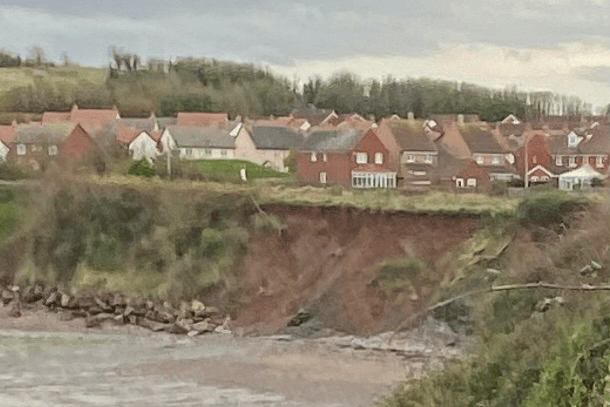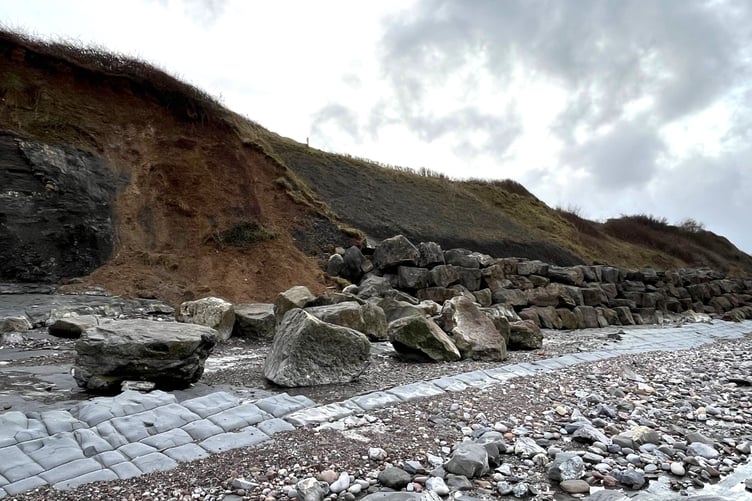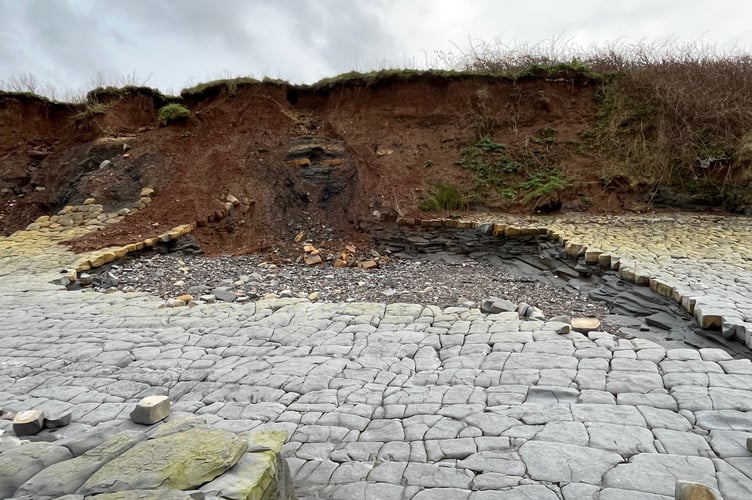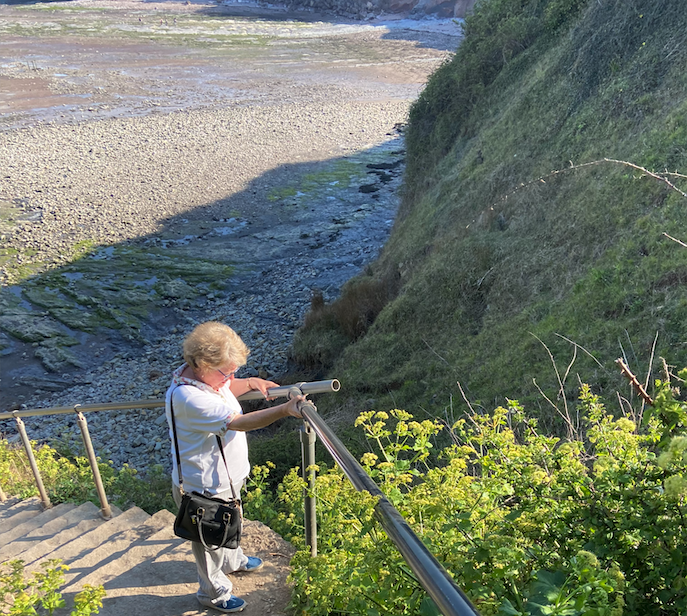WEST Somerset’s most important visitor attraction is beginning to be threatened by coastal erosion which is putting the district’s steam train line at risk.
The West Somerset Railway (WSR), which helps to attract millions of people to the district each year, will celebrate its 50th anniversary at Easter next year.
But concern has been raised following a recent increase in the rate of cliff erosion between Watchet and Doniford, which has started to threaten the 20-mile heritage railway track.
People have also been warned to be extra wary of the cliffs and keep a safe distance from them because falls can happen with little or no warning.

Somerset Cllr Rosemary Woods, who represents Watchet on the unitary authority, said she had raised concerns about the potential threat to the railway but they had been dismissed.
Cllr Woods said nature was circumventing protective rock armouring installed several years ago and there were also worries for homes in Doniford which were being drawn perilously close to the sea by the cliff collapses.
Watchet-based ecological and geological consultancy Geckoella has been advising town councillors and monitoring the erosion of the coastal cliffs, which two years ago led to the sudden closure of the B3191 road to Blue Anchor by the Somerset authority.
Co-director and principal geologist Dr Andy King told the Free Press: “As far as we know, there is no immediate risk to the railway track itself, but given the rate of coastal erosion in Doniford Bay, it is right that concerns are being raised at this stage so appropriate remedial action can be considered in a timely fashion.

“That said, we are aware there is an increase in the rate of cliff erosion in the vicinity of the WSR at Doniford Bay and a potential risk that the existing rock armour is now starting to be outflanked by erosion of the adjacent cliffs.
“One particularly noticeable feature is the breaching by tidal action of a conspicuous, sloping limestone bed adjacent to the rock armour in front of the trackside banks.
“This limestone bed formerly acted as a ‘natural coastal defensive platform’ but now the softer shales and mudstones underlying the limestone are exposed and these are being quickly eroded.”
Dr King said there had been several slips from the cliffs in Helwell Bay in the past few weeks, some of which were quite large, especially at the western end of the bay in dark grey-black Helwell marls and the brown, earthy Doniford beds exposed near the cliff top.
He said: “Some of the cliff falls have been caused by direct action from waves during stormy high tides.
“But, we believe much of the recent activity and instability is due to the cliffs being saturated by heavy rainfall and resultant groundwater movement and drainage, especially at the boundary between the relatively impermeable dark coloured marls and the more permeable brown earths.

“All of these sediments are very soft and we confidently predict that further falls will occur, so we would advise all beach users to be extra wary of the cliffs and keep a safe distance away from them as falls will happen with very little or no warning.”
Dr King said significant erosion had also been occurring in the low cliffs further along Doniford Bay, particularly close to old lime kilns and the slipway access.
He said: “We are also keeping an eye on the alternating limestone and shale cliffs near the old concrete groynes and coastal defences in front of the West Somerset Railway.
“We undertook a comprehensive geological survey, including drones and boots on the ground, of the entire coast between Blue Anchor and Lilstock last autumn and we are planning to undertake another survey of the Doniford and Helwell Bay areas later this spring.
“This would be really useful to help us compare results and assess the impacts of the winter storms along this section of the coast.
“We also continue to keep a monitoring brief for Watchet Town Council on the cliffs along West Beach, where there has been significant movement this winter, particularly near the cliff top, and large blocks of the lower cliffs containing the alabaster layers have fallen away.”
The WSR was approached by the Free Press for comment but it refuses to talk to the newspaper.

-Chris-Webb-Keith-Woolgar-and-Ray-Coleing.jpeg?width=209&height=140&crop=209:145,smart&quality=75)



Comments
This article has no comments yet. Be the first to leave a comment.